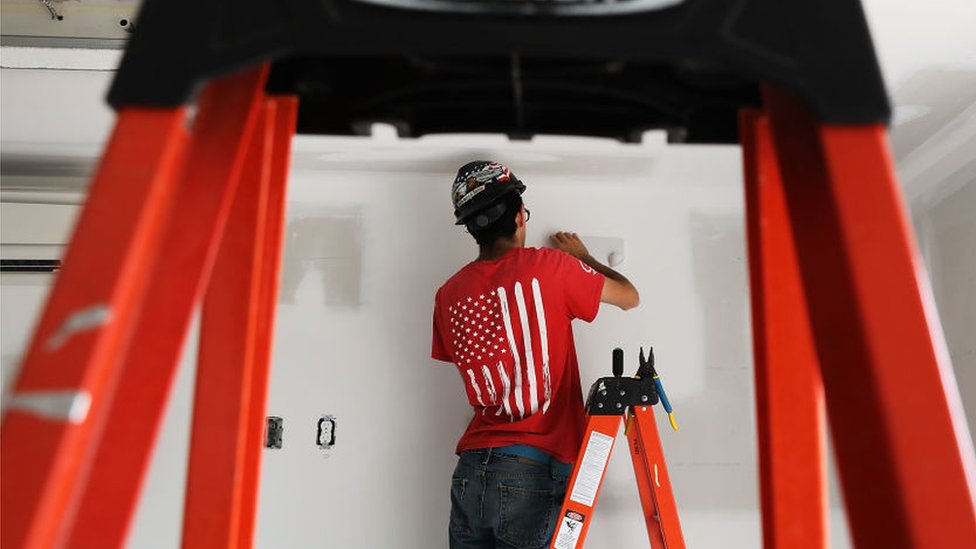US economic growth hits fastest rate since 2014


Media playback is unsupported on your device
The US economy grew at its fastest pace in nearly four years in the second quarter, expanding at an annualised rate of 4.1%, official figures show.
The gains were driven by strong consumer spending, business investment and a surge in exports as firms rushed to beat new trade tariffs.
US President Donald Trump described the acceleration as “amazing”, claiming it as proof his policies are working.
But many analysts cautioned that growth could cool in coming months.
“In one line: Looks great; won’t last,” wrote Ian Shepherdson, chief economist at Pantheon Macroeconomics.
‘Historic proportions’
The US economy expanded at an average annual growth rate of 2.2% between 2012 and 2017.
President Trump has predicted that will rise to 3% or more as a result of his policies, which include tax cuts, increased government spending and an effort to re-write trade relationships.
Friday’s report from the Commerce Department showed exports grew by more than 9%, the fastest rate since the fourth quarter of 2013, boosted in part by companies seeking to avoid new trade tariffs.
Consumer spending also rose by 4% in the second quarter, up from the 0.5% rate seen in the previous three months.
The annualised growth rate for the first quarter of the year was also revised up to 2.2% from 2.0%.
“We’ve accomplished an economic turnaround of historic proportions,” President Trump said on Friday, adding that the gains would be sustained.
“This isn’t a one time shot,” he said.
Inflation on target
While Friday’s report showed the US economy accelerating, the gains were in line with expectations – and were not out of proportion with previous years.
In 2014, US GDP increased by 5.1% in the second quarter and by 4.9% in the third quarter.
Compared with the second quarter of 2017, the economy grew by 2.8%.
PNC Bank said it expects US economic growth to hit 3.1% in 2018, assuming that trade tensions dissipate.
“If the US and its partners do implement substantial tariffs and other trade barriers, US economic growth is likely to be much weaker than this baseline forecast,” chief economist Gus Faucher wrote.
The report also showed that inflation, which has been lacklustre in recent years, rose by 2% according to the Fed’s preferred measure, which is tied to consumer spending, except on food and energy.
That is the second quarter in a row the measure, known as core PCE, has hit or exceeded the Fed’s 2% target, and is likely to keep the central bank on track with its plans to raise interest rates gradually.
Analysis
By Rob Young, BBC business reporter
Donald Trump tweeted earlier this week that the US has “the best financial numbers on the Planet”.
That’s not quite the case and it should be said that these first estimates of economic growth are based on skimpy data. But today’s economic data is certainly good, and the president can take some of the credit.
His large package of tax cuts has boosted growth. Perversely, so did the threat of various trade rows. Just before Beijing’s retaliatory tariffs against the US started at the beginning of July, US soybean exports to China skyrocketed.
This is the first time since the 2016 election that US growth has hit the 4% target President Trump set himself during the campaign.
The latest growth number is twice what it was in the first quarter. But economists warn it’s unlikely to last.
There are worries that America’s numerous trade spats are now hitting economic growth. So what helped the economy in the first half of the year may well hurt it in the second half.
Source: BBC




